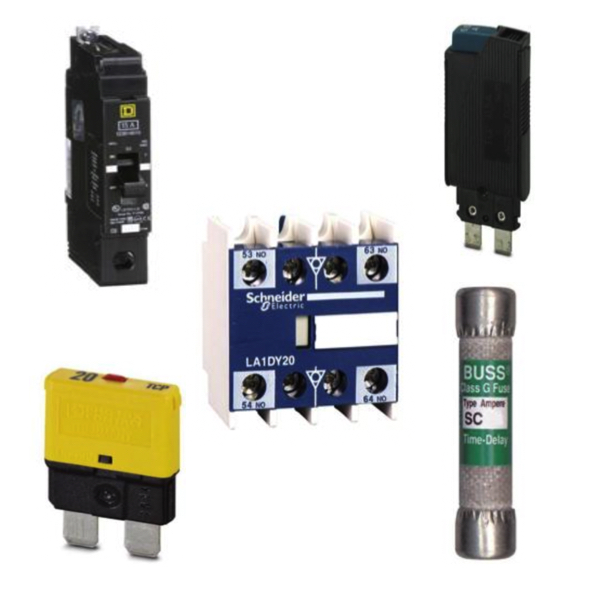Circuit Breakers & Fuses

RSP Supply carries a full line of circuit breakers and fuses, including molded case breakers, cartridge fuses, and glass fuses, designed to safeguard electrical systems with dependable short circuit and overcurrent protection. These essential protective devices prevent excessive current from damaging transformers, control circuits, and other system components.
Circuit breakers and fuses perform similar functions but operate in distinct ways. A molded case circuit breaker (MCCB) is designed for medium to large systems, capable of handling currents up to 2,500 amperes. MCCBs are resettable after a fault, offering convenience and reusability in both commercial and industrial power systems. Fuses, on the other hand, operate by melting an internal conductor when current exceeds a safe level, interrupting the circuit immediately to prevent further damage. Medium-voltage fuses and power fuses are commonly used in industrial and utility systems, providing robust protection against short circuits and overloads. Each device is rated for a specific current capacity and breaking strength, ensuring compatibility with a range of applications and electrical system configurations.
The main distinction between these two protective devices is that fuses provide single-use protection, while circuit breakers can be reset and reused. Both ensure circuit reliability and safety, but circuit breakers are generally preferred for high-capacity or frequently serviced installations due to their durability and ease of operation.
FAQs
Q: Can molded case circuit breakers protect industrial electrical equipment?
Yes, molded case circuit breakers (MCCBs) are designed to protect industrial electrical equipment by interrupting overcurrent and short circuit conditions, providing safe and reliable power system operation.
Q: What is voltage drop in control circuits?
Voltage drop refers to the reduction in voltage that occurs as electrical current flows through conductors or components with resistance, which can affect performance in control circuits.
Q: What are the short circuit ratings of cartridge and glass fuses?
Cartridge fuses typically have short circuit ratings ranging from 35A up to 10kA or more, while smaller glass fuses used in low-power circuits generally have ratings up to 35A.
Q: What is the main difference between fuses and circuit breakers?
Fuses are single-use devices that must be replaced after a fault, while circuit breakers can be reset and reused, making them ideal for larger or more frequently maintained systems.
Q: When should fuses be used instead of circuit breakers?
Fuses are ideal for smaller or cost-sensitive applications where simplicity and compact protection are required, whereas circuit breakers are better suited for larger installations requiring easy reset capability and long-term serviceability.
Why Buy Circuit Breakers and Fuses from RSP Supply
RSP Supply provides a wide range of high-quality circuit breakers and fuses from trusted manufacturers. Our products are designed for reliable performance, safety, and compatibility across residential, commercial, and industrial applications, with same-day shipping on most products and expert technical support.

